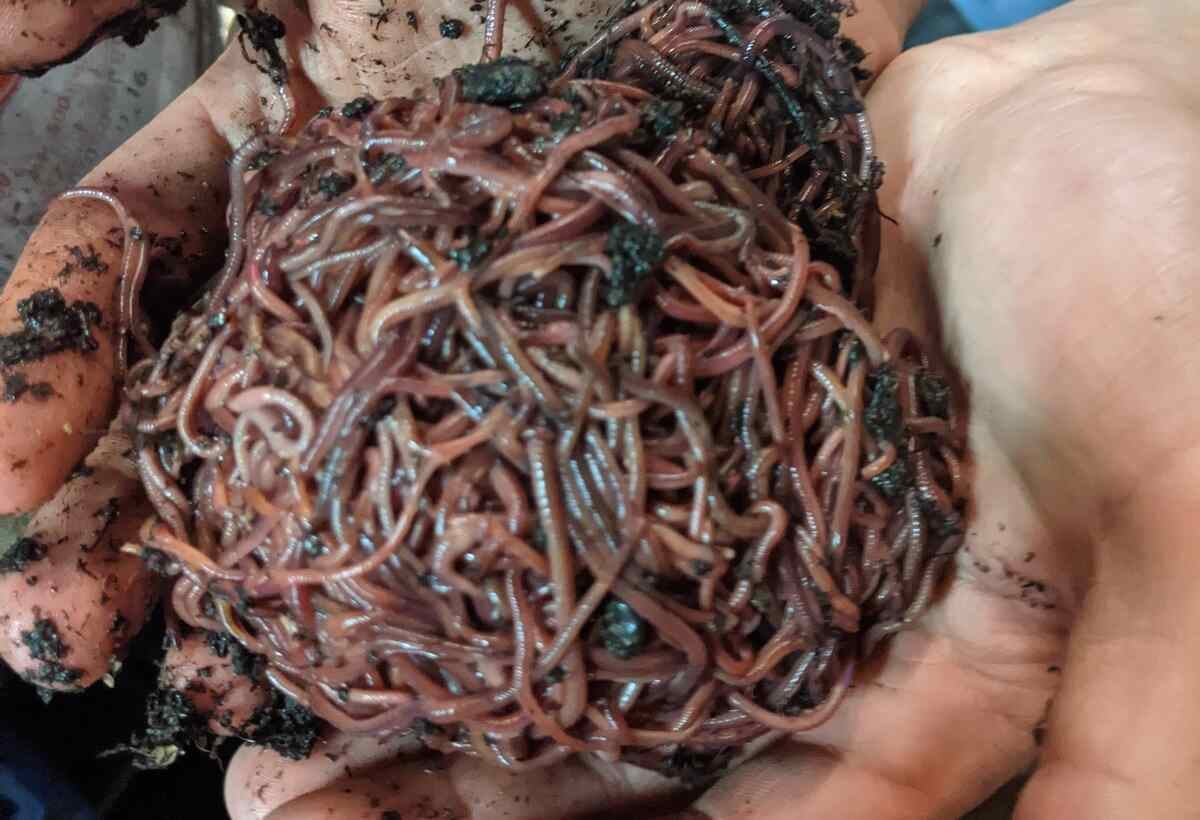Unlock the Keys of Red Wigglers: Your Overview to Composting Success
The combination of red wigglers into composting practices offers a considerable chance for enhancing soil health and wellness and advertising sustainability. These organisms are not just efficient recyclers of natural waste; they use a myriad of benefits that can transform yard administration. Recognizing their demands and habits is vital for enhancing their capacity, from establishing an ideal worm container to feeding them the ideal materials. As we check out the crucial elements of successful vermicomposting, one might question exactly how these little creatures can lead to an extra lively and productive yard ecosystem.

What Are Red Wigglers?
Native to North America, they are commonly found in decaying fallen leaves and compost heap, where they play an important duty in nutrient recycling. Their adaptation to residing in a wet, aerobic environment enables them to take in huge quantities of organic waste, simplifying into nutrient-rich spreadings that improve dirt wellness.
Red wigglers replicate quickly, with a solitary worm qualified of producing numerous cocoons each week, each having numerous hatchlings. Recognizing the biology and behavior of red wigglers is essential for maximizing their potential in composting applications.
Benefits of Utilizing Red Wigglers
Using the power of red wigglers in composting supplies various benefits that enhance soil health and wellness and advertise sustainable waste monitoring. These exceptional organisms effectively damage down organic issue, changing kitchen area scraps and yard waste right into nutrient-rich vermicompost. This completed item is exceptionally valuable for plant development, as it improves soil structure, increases moisture retention, and improves vitamins and mineral schedule.

Establishing Your Worm Container
Producing an effective worm bin is an uncomplicated process that can considerably boost your composting efforts. The initial action is choosing an ideal container. Worm containers can be made from plastic storage space bins, wooden boxes, or commercially readily available worm containers. Make sure the bin has appropriate drainage and ventilation holes to keep optimal dampness levels and air movement.
Following, prepare the bedding product, which works as the worms' habitat. A mix of shredded paper, cardboard, and coconut coir functions well, giving a comfortable environment for the worms. Goal for a bed linen depth of about 4-6 inches. Dampen the bedding lightly, ensuring it resembles a wet sponge without excess water pooling at the base.

Feeding Your Red Wigglers
To guarantee the wellness and performance of your red wigglers, it is vital to supply them with a well balanced diet that fulfills their dietary needs. Red wigglers grow on a varied range of organic products, which not just supply essential nutrients but additionally promote reliable composting.
Begin by integrating kitchen scraps such as veggie peels, fruit cores, and coffee premises. Avoid citrus fruits, onions, and garlic, as these can be destructive to worm health. In addition, introduce shredded paper, cardboard, and completely dry leaves to produce a well-aerated atmosphere.
Feeding regularity need to be kept an eye on; generally, worms can take in half their body weight in food weekly. It is essential to prevent overfeeding, as excess food can lead to undesirable odors and bring in pests. An excellent practice is to add food in percentages, permitting worms to refine it before introducing extra.
Maintaining moisture degrees is additionally crucial; the bed linens needs find more to perspire however not soggy. Be certain to on a regular basis inspect the temperature level and pH degrees of the container to guarantee an optimum atmosphere for your red wigglers, ultimately enhancing their composting performance.
Harvesting and Utilizing Compost
A successful composting procedure with red wigglers finishes in the rich, dark compost called vermicompost, which can considerably enhance dirt wellness and plant growth. Gathering this nutrient-dense product normally happens every three to 6 months, relying on the size of your system and the amount of organic matter being refined.
To harvest, delicately different the compost from the worms and any undecomposed materials. One effective technique involves moving the components of the container to one side and adding fresh bed linen and food to the void, encouraging the worms to move. After a couple of days, the garden compost can be collected from the opposite side.
It is essential to make use of vermicompost correctly to maximize its advantages. By integrating vermicompost into your gardening regimen, you not just reuse natural waste but additionally develop a flourishing ecosystem that supports sustainable gardening methods.
Final Thought
In recap, red wigglers function as extraordinary allies in composting efforts, transforming organic waste right into nutrient-rich vermicompost (Red Wiggler Express). Their special organic features and efficient waste handling capacities contribute considerably to lasting horticulture practices. By recognizing the optimum conditions for their habitat, feeding demands, and garden compost harvesting methods, garden enthusiasts can enhance soil wellness and promote plant vitality. Welcoming vermicomposting not only minimizes garbage dump waste yet additionally promotes a more ecologically accountable strategy to horticulture and source administration.
Comments on “Enjoy Healthy, Thriving Grass with the Help of Red Wiggler Express Lawn Care Solutions”